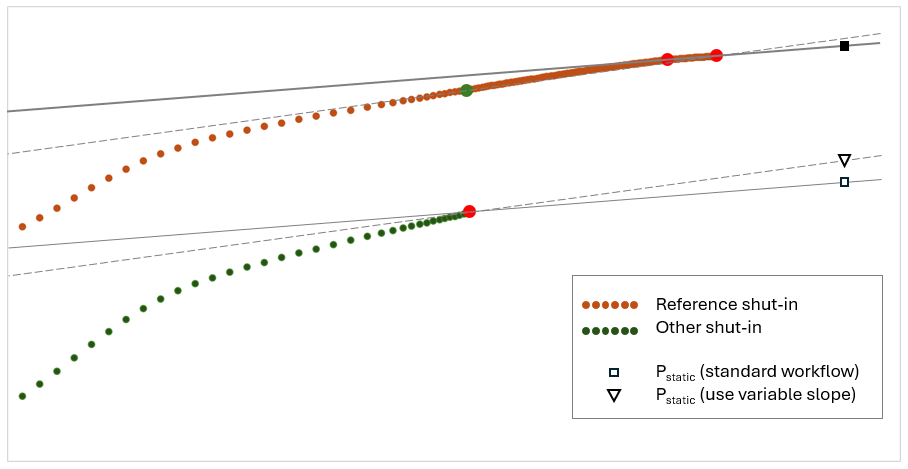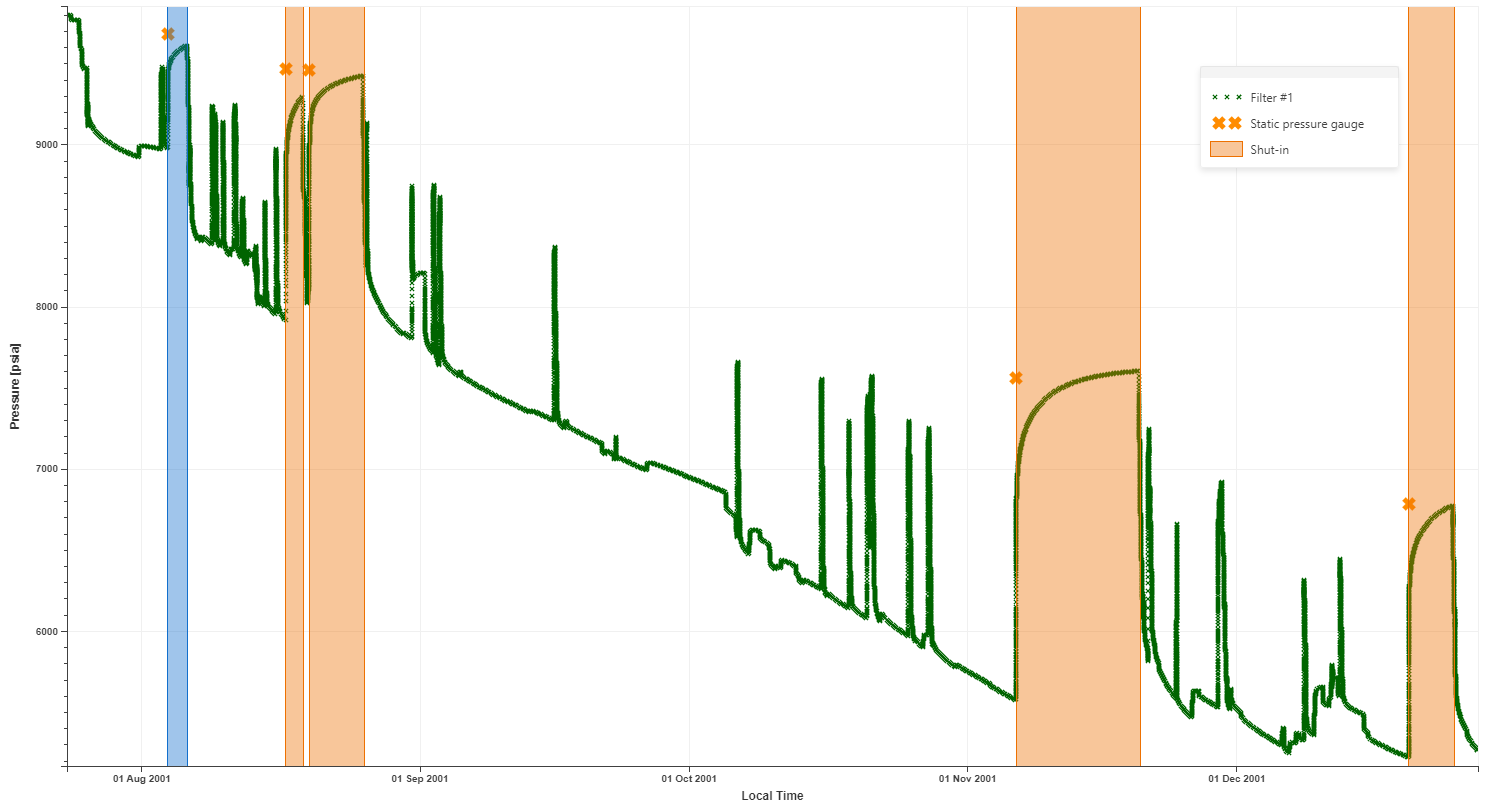Static pressure
Objectives
The objective of the User Task is to come up with an estimate of the static reservoir pressure at the beginning of each shut-in.
This estimate is based on the MDH plot in which a straight line is fitted to the radial flow period of the reference extraction and extrapolated by fixed number of hours (by default 200 hours).
The pressure at the end of the extrapolated line is reported as static pressure. For all other extractions straight lines are drawn from that last point of their respective MDH curves with the same slope (possibly rate normalized) as the reference straight line and same extrapolation time.
The User Task:
updates the Saphir seed document with new rate and pressure data,
extracts any new shut-ins,
updates the static pressure analysis in the Saphir document, and
writes any new static pressure values to the output data set in KA.
Input
Saphir file – The seed file for the user task. If this file contains a static pressure analysis, new extractions will be appended to this analysis. Otherwise, a default static pressure analysis will be created at the first call to the PTA mS. When a default static pressure analysis is created, the first extracted shut-in becomes the reference for the others.
Shut in – The shut-in gauge used for extraction. Please note that the same shut-in gauge should be used to generate the corrected input rates discussed later.
Gauge Loading (Append, Reload) – Whether the input gauges in the user task should be appended to the existing gauges or should be reloaded. If the reload option is used, any existing extractions and static pressure analysis will not be preserved. New extractions will be made using the shut-in gauge and a default static pressure analysis will be created. The reload option could be useful to make first extractions and create a static pressure analysis from an empty seed document.
Data Type (P, BHP) – Indicates whether the input pressure gauge is a surface gauge or a bottom hole gauge. This is required to bind the user task to a pressure gauge of corresponding type.
Pressure gauge – Input pressure gauge.
Oil gauge, Gas gauge, Water gauge – Surface rate gauges corrected using the shut-in output. Although all three rate inputs are marked optional, at least one of them should be present without which there will not be any new extraction.
Use variable slope – When checked, reflects the workflow in which the straight line slope of the other shut-ins that are shorter is different from the reference straight line slope. The slope is defined from the straight line drawn through two points, viz. the point on the reference curve corresponding to the end of the other shut-in and latter of the two red points on the reference curve (see the figure below).

Rate normalization – When checked, the straight line slope for each of the shut-ins is calculated by applying a normalization factor (ratio of reference rates) to the reference straight line slope.
Elapsed time – Elapsed time (in hours) up to which the straight line is extrapolated. The static pressure reported corresponds to the ‘y value’ of the straight line at this elapsed time.
Output times – The user can control the time at which static pressures are reported
Output
Static pressure gauge – A static pressure gauge that is data-typed as TSP. The static pressure values are reported either at the start or at the end of the extraction shut-in, depending on the user’s selection.
Another indirect output of this user task is an updated Saphir seed file with updated data, extractions, and static pressure plot.

User Task dialogue

Output static pressure together with input pressure and shut-in channels